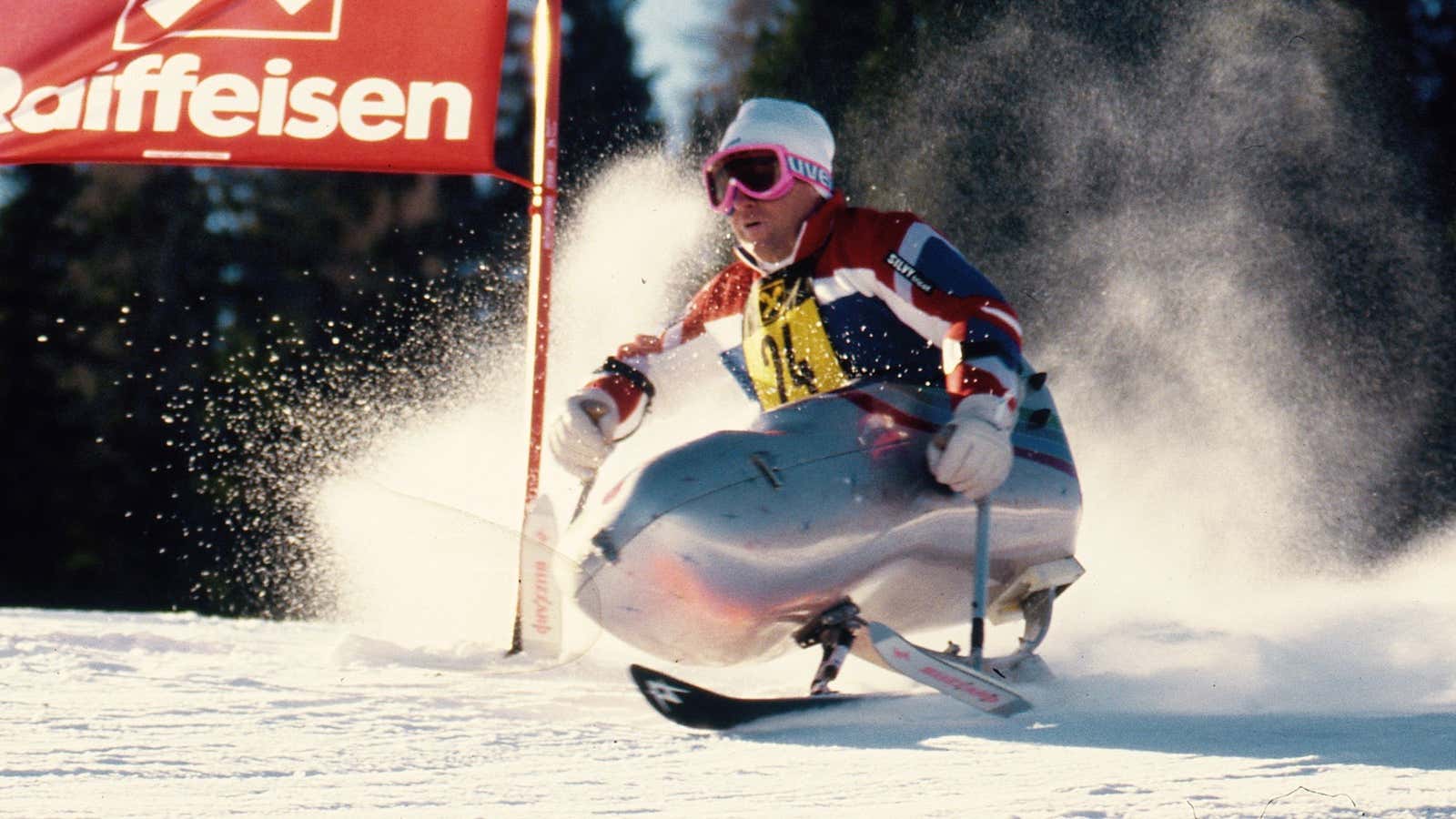We watch athletes compete and marvel at their feats because athleticism reminds us of the potential for human greatness. The 670 competitors in Korea for the PyeongChang 2018 Paralympic Winter Games on March 9-18, however, take awesome to another level.
Despite physical limitations that might seem to prohibit their participation in sports, these athletes ski, play hockey, snowboard and more, revealing that spirit, not alleged perfection, is the key to excelling. Indeed, the Paralympic Games’ official mascot is an Asiatic black bear named Bandabi, who symbolizes will and courage.
This year marks the 70th sporting event for athletes who transform limitations into strengths. The first games were initiated in 1948 by Sir Ludwig Guttmann, an esteemed German physician who in 1939 was forced to escape the Nazi regime’s mass roundup of Jews. Guttmann was invited by the Society for the Protection of Science and Learning in England to seek refuge there, and during World War II developed a revolutionary approach to rehabilitating injured veterans. Guttman’s goal for patients was total reintegration into society, and he encouraged paraplegics to play and participate in activities, including skiing.
The first such alpine skiing event was held in Austria in 1948, with 17 athletes. The International Olympic Committee adopted the games officially in 1984, dubbing them the Paralympics. Events are held in the country hosting the Olympics.
This year, there are 80 events in six different sports, with athletes from 25 countries competing. Here’s what you can expect to see.
Biathlon
The biathlon is a race of endurance and steadiness over a 1.2-mile or 1.5-mile course that is skied either three or five times for a total distance of 3.7-9.3 miles. Athletes also have to shoot at targets in two or four shooting rounds. The events test speed and balance, contrasting racing with the restraint it takes to hit a target. Misses are penalized with increased overall route time.
Visually impaired athletes use acoustic signals with varying intensity levels to judge where targets stand. Male and female athletes are divided into three categories—sitting, standing, and visually impaired. They compete across three events: sprint, middle, and long distance.
Ice hockey
This is a mixed-gender team sport played much like any other hockey game but for the equipment involved and the fact that men and women play on the same teams. “Swap ice skates with sledges, and two hockey sticks instead of one, and you pretty much have para ice hockey,” explains the Games’ website.
Athletes sit on sledges, which have runners and two hockey skate blades. Each player has two sticks with metal pics on the butt end that allow players to propel themselves. Pucks move at a speed of up to 60 miles per hour. The sport was invented by patients at a Stockholm, Sweden rehabilitation center in the 1960s.
As in ice hockey, two teams try to outscore each other by shooting a puck across an icy skating rink into the opponent’s goal. Six players from each team are on the ice at once, including the goalkeeper. There are three 15-minute periods with 15-minute breaks in between. Matches go into overtime if the score is tied after the third period, and if there’s no goal in overtime, penalty shots are applied.
Cross-country skiing
Cross-country skiing competitions are open to male and female athletes with a physical or visual impairment. Some use a sit-ski, which is a chair equipped with a pair of skis, and athletes with vision impairment use sighted guides. There are short-, middle-, and long-distance races ranging from 1.5 miles to about 12 miles, and team relays across three categories: standing, sitting and vision-impaired.
Alpine skiing
Athletes, male and female, race down slopes at about 60 miles per hour in five events on the Paralympic alpine skiing program: downhill, super-G, super combined, giant slalom, and slalom.
The race accommodates athletes with spinal injuries, cerebral palsy, amputation, or visual impairment and other conditions across three categories: standing, sitting, and visually impaired. Athletes can ski with sighted guides who signal the course route and some competitors have equipment adapted to their needs, including single-ski, sit-ski, or orthopedic aids.
Snowboard
This sport made its Paralympic debut at Sochi 2014 with two events; now it has 10. Athletes compete in two disciplines, snowboard-cross and banked slalom, across three categories, and events accommodate upper- or lower-limb impairments.
Each athlete completes three runs down a course of varying terrain, including jumps, banks, and turns, with the best run determining the final order in heats based on ascending time. There is only one rider on the course at a time. In the finals, there are 16 men competing against each other, and eight women against each other, with two competitors per heat.
Wheelchair curling
Curling is an oddball sport that is gaining worldwide attention. It started in Scotland in the 16th century but is now beloved in Asia.
At the Paralympics, two mixed-gender teams of four players each take turns sliding stones across ice, aiming for a target area called the “house.” Teams score by getting close to the center of the house, and the team with the most points after eight rounds wins.
The team chief, called “the skip,” dictates other player’s shots through verbal and visual instructions. There is no sweeping in wheelchair curling, and athletes can use a delivery stick. Stones are delivered from a wheelchair.
